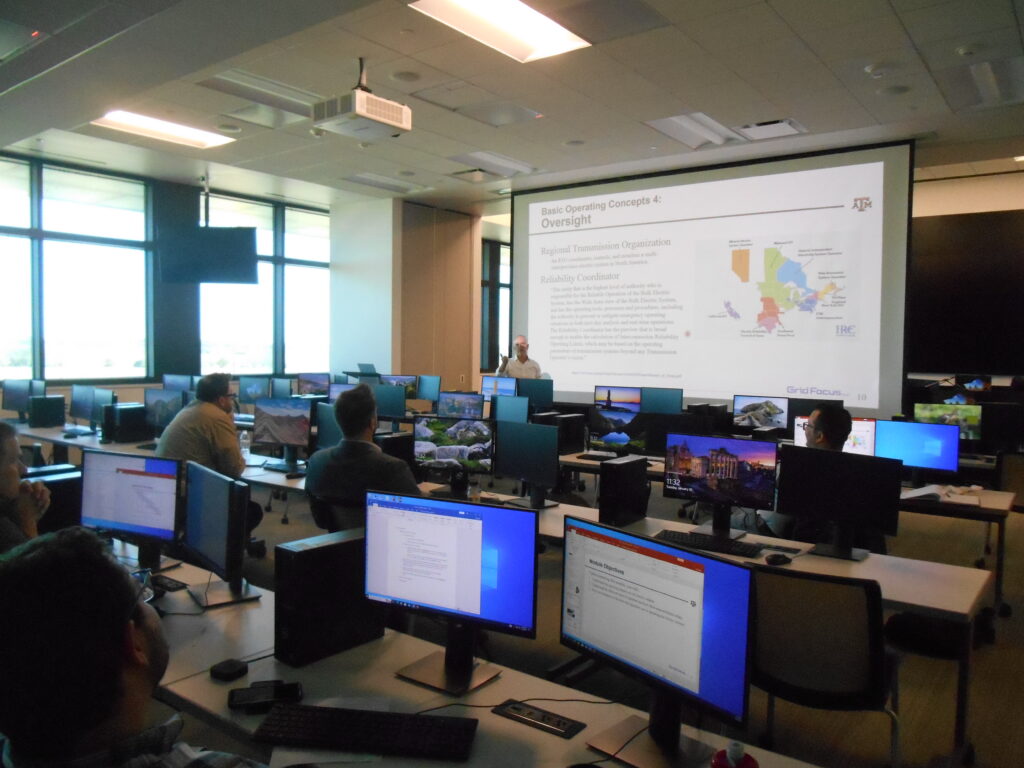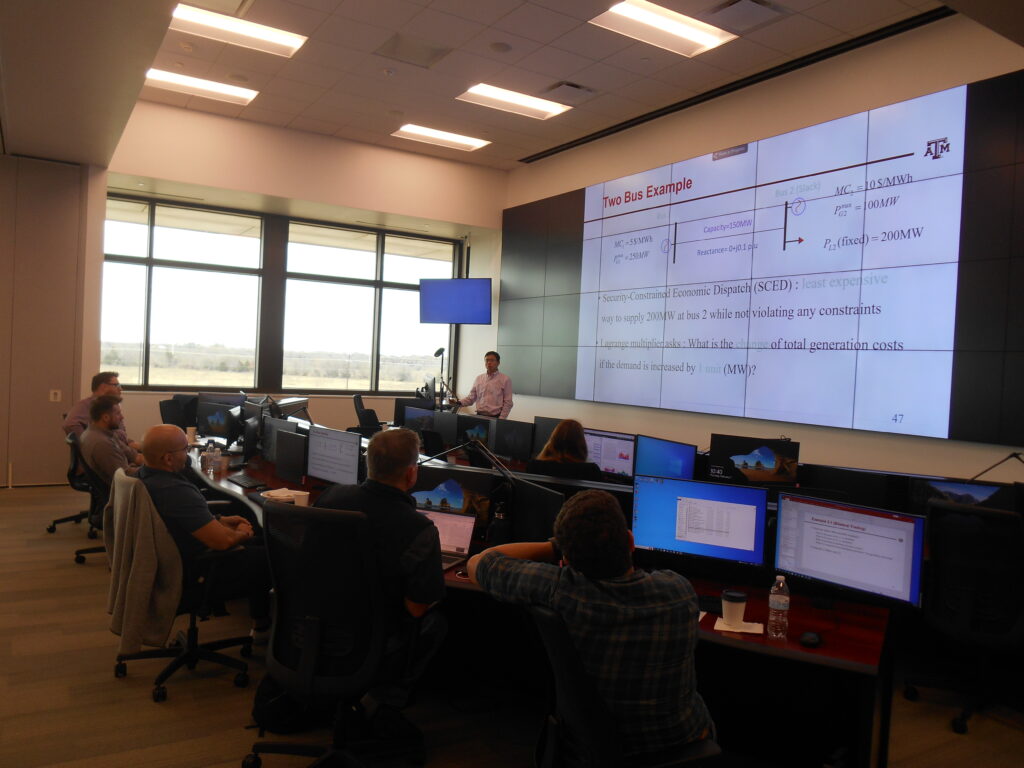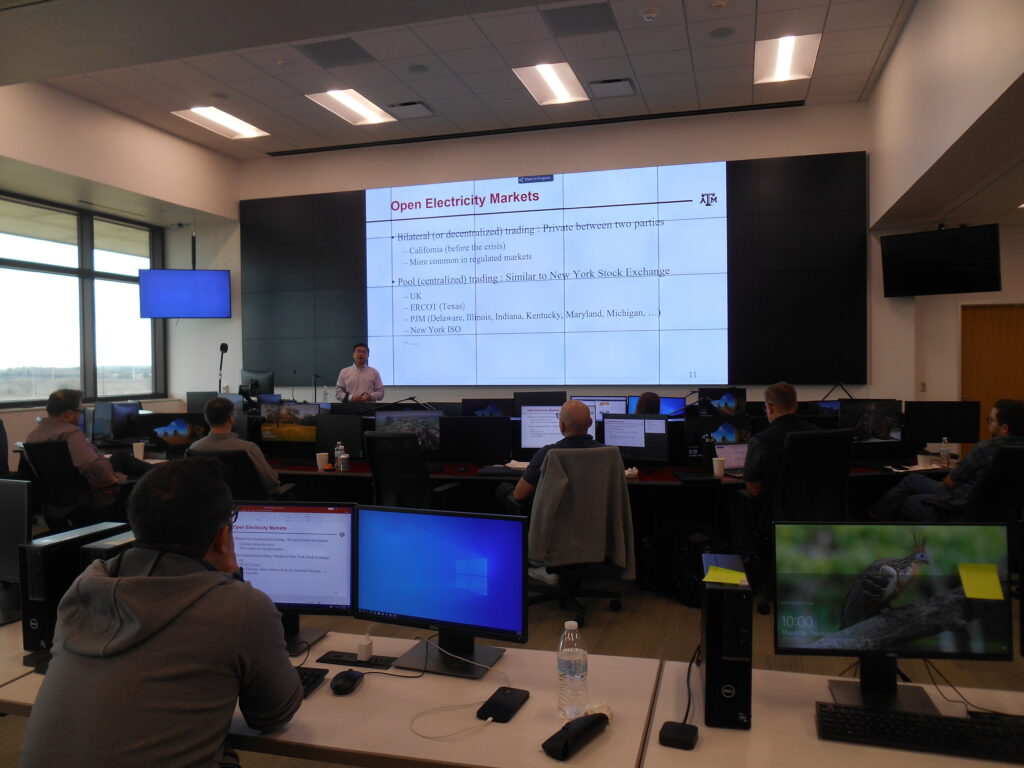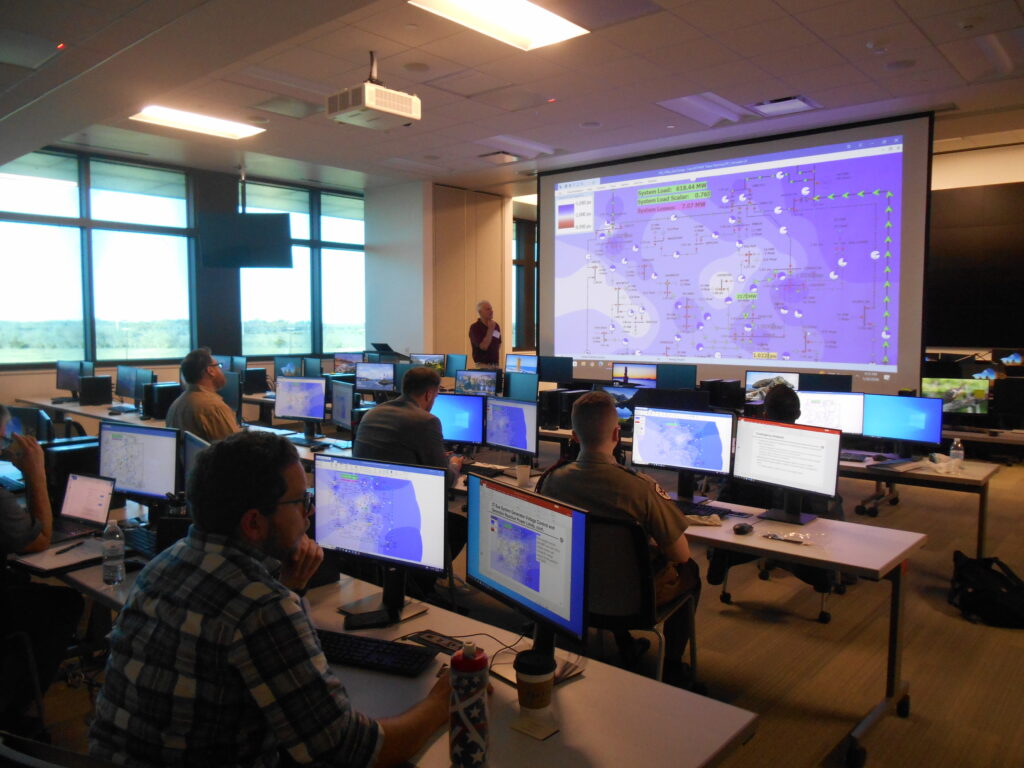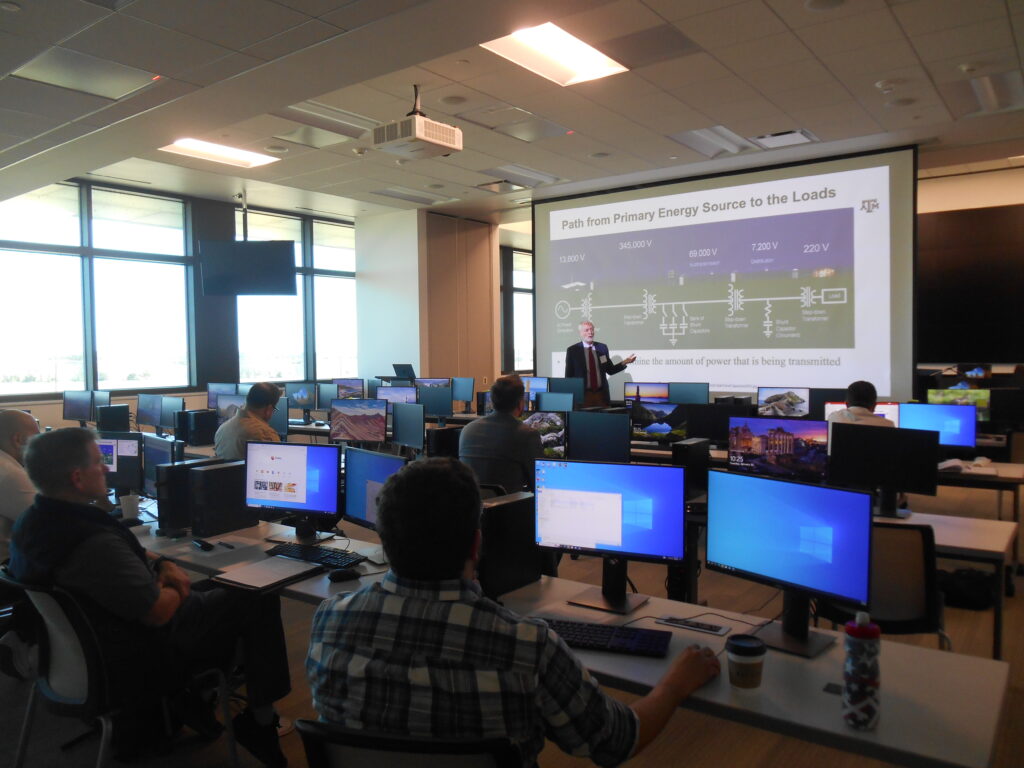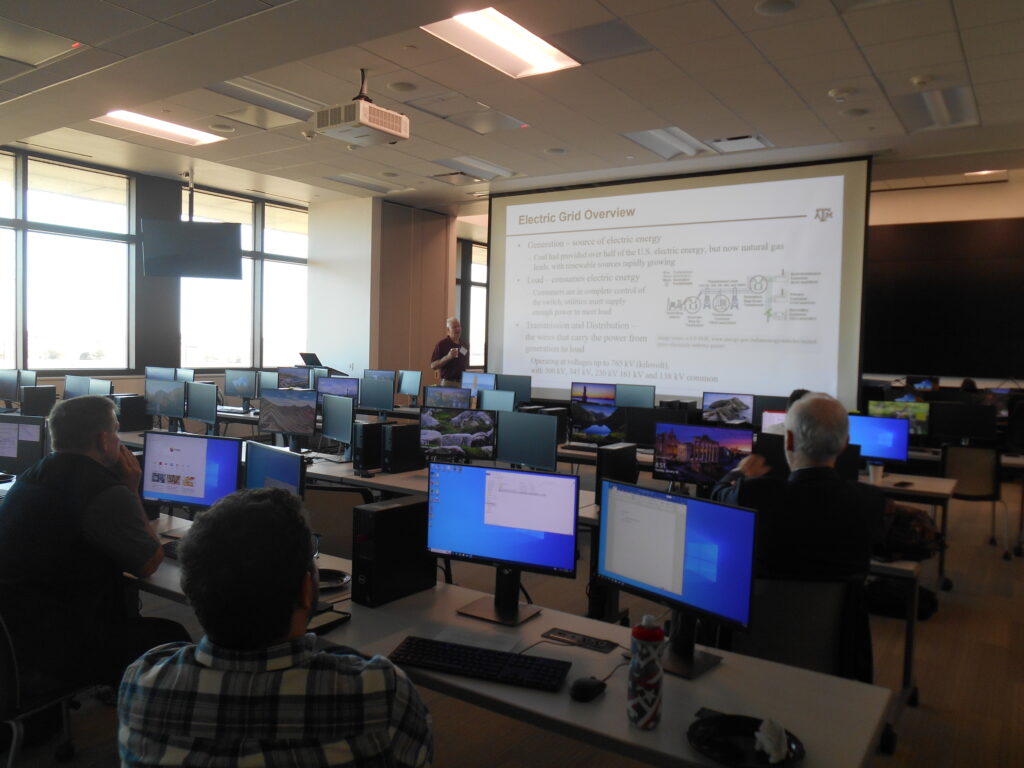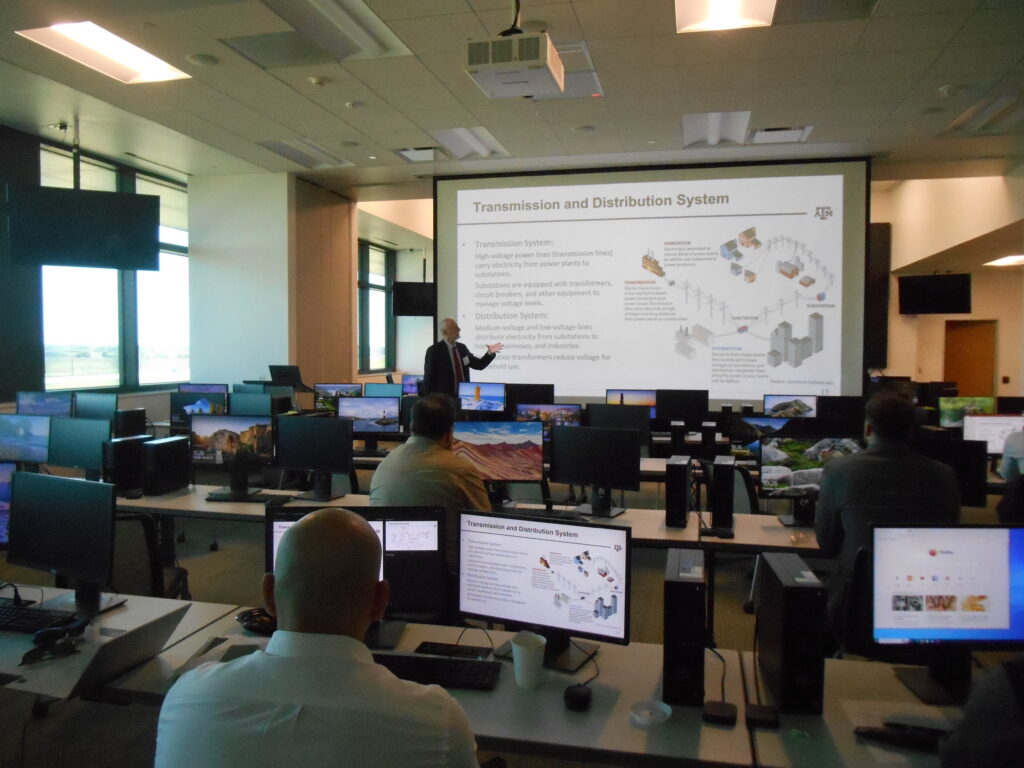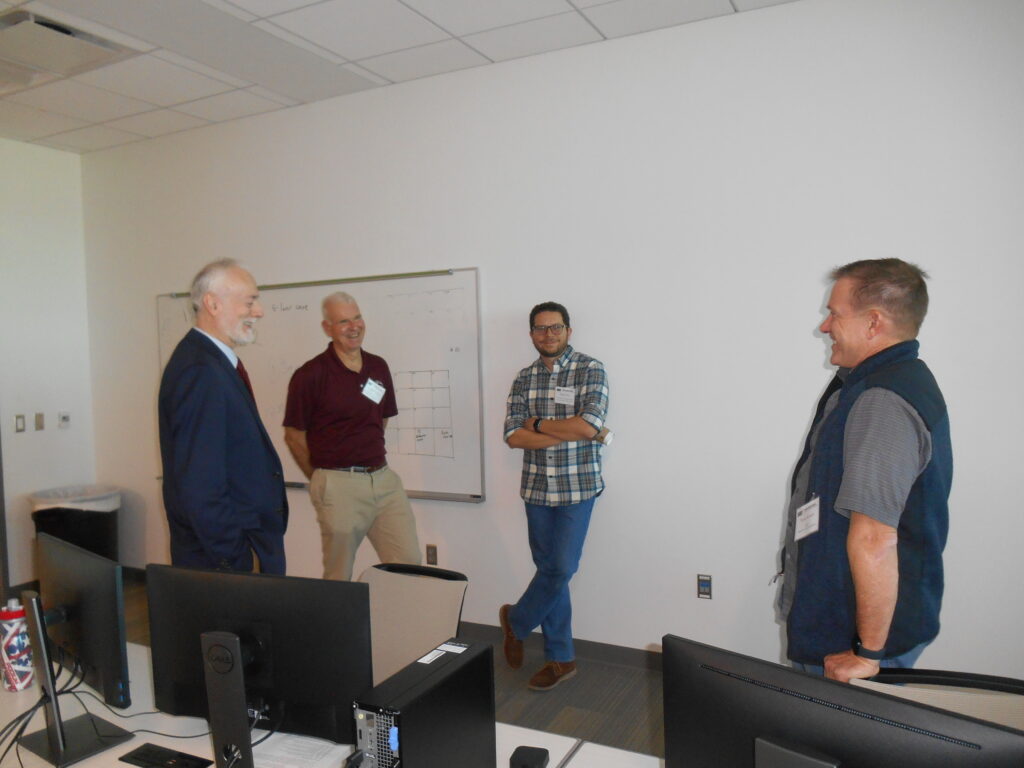(Photos Below)
Electricity is the lifeblood of our modern society, and for most this electricity is supplied by large-scale, interconnected electric grids. Engineered as the ultimate in plug-and-play convenience, the wall outlet is actually the gateway to the world’s largest and most complex machine. The goal of this course is to provide a comprehensive introduction for those without an in-depth electric power engineering background on how such electric grids are designed and operated, and on how they are likely to change in the future. The electric grid of the past, which was primarily power by large-scale fossil-fuel generators, is no longer a reality and the current system is rapidly changing. The integration of vast amounts of renewable generation resources along with the addition of new technologies such as energy storage and large amounts of digital technology supporting its design and operation, also known as the smart grid, are presenting many new opportunities and challenges. This course is focused on providing a non-technical introduction for those who need to understand the design and operation of electric grids.
The course philosophy is to provide in-depth coverage of the topics, but to do so using a practical, hands-on approach with abundant examples. Throughout the course concepts will be illustrated using common industrial analysis and simulation tools including PowerWorld Simulator. Collectively the five course instructors have wide experience in this area doing electric power system studies, software tool development, research and engineering education (Hours: CEU 2.1, PDH 21).
Who Should Attend
The course is designed to provide introductory coverage of the design and operation of large-scale electric grids for people without an electric power engineering background. It is ideally suited for those who work in areas associated with the electric grid and need to better understand electric power engineering but don’t possess a technical degree. Hence the course is appropriate for non-technical professionals at electric utilities and other companies in the electric power industry as well as for staff at regulatory agencies, government officials, developers, investment bankers, etc. This short course is particularly useful for those who manage electric power engineers, for new engineers from other disciplines, for academics wishing to gain practical knowledge in this important area, and for graduate students interested in careers in the power industry.
This course counts toward the Texas A&M Certificate in Electrical Power Engineering.
Topics
- Introduction and history of the electric grid
- Components of the electric grid
- Overview of how electric grids are operated
- Modeling electric grids at the transmission level
- Modeling electric grids at the distribution level
- Common engineering analysis tools
- Interconnected grid simulations
- Electricity markets
- How the electric grid is planned
- Electric grid protection
- Policy and regulator issues
- The role of NERC and regional committees
- Electric grid dynamics
- Impacts of renewable resources and energy storage on the grid
- Electric grid cyber security
- Improving electric grid resiliency
- Emerging technologies and their potential impact
- “SmartGrid” or Grid Modernization
Date
January 30 – February 1, 2024
Location
The short course was held in person at the Center for Infrastructure Renewal, RELLIS Campus.
Instructors

Tom Overbye is a Professor and holder of the O’Donnell Foundation Chair III in the Department of Electrical and Computer Engineering at Texas A&M University (TAMU), and Director of TEES Smart Grid Center. He received his BS, MS, and Ph.D. degrees in Electrical Engineering from the University of Wisconsin-Madison. Before starting his academic career he was employed with Madison Gas and Electric Company, working in their planning and operations departments. He is the original developer of PowerWorld Simulator (a widely used power system planning tool), a co-founder of PowerWorld Corporation, and an author of a widely used Power System Analysis and Design book. He is a recipient of the IEEE Power and Energy Society Outstanding Power Engineering Educator Award, an EEE Fellow, a member of the US National Academy of Engineering, and was responsible for the initial development of dynamics analysis in PowerWorld Simulator.
Miroslav Begovic is the Carolyn S. & Tommie E. Lohman ’59 Professor, and is the former Department Head of Electrical and Computer Engineering at TAMU. Prior to that, he was Professor and Chair of the Electric Energy Research Group in the School of Electrical and Computer Engineering, and an affiliated faculty member of the Brook Byers Institute for Sustainable Systems and University Center of Excellence in Photovoltaic Research at Georgia Tech. Dr. Begovic obtained his PhD from Virginia Tech University. His research interests are in monitoring, analysis, and control of power systems, as well as development and applications of renewable and sustainable energy systems. Dr. Begovic is a Fellow of IEEE and member of Sigma Xi, Tau Beta Pi, Phi Kappa Phi and Eta Kappa Nu. Dr. Begovic is a former Chair of the Emerging Technologies Coordinating Committee of IEEE PES, IEEE PES Treasurer (2010-2011), IEEE PES Distinguished Lecturer, and serves as President of the IEEE Power and Energy Society.
Don Morrow is Founder and Partner at Grid Focus LLC, a professional services company focused on the electric utility industry. Don has worked exclusively in the energy industry and brings a unique combination of technical knowledge and business strategy experience. Before moving into consulting, Don spent 26 years working at electric utilities, including serving as Director of Operations and Director of Planning at American Transmission Company. As a consultant, Don has advised clients in operations, system planning, renewable integration, grid resiliency, NERC compliance, utility business models, organizational design, technology strategy and emerging technology utilization. He has led several major transmission studies focused on increasing access to renewable energy including the EHV Overlay study for SPP, the SMARTransmisison Study for a consortium of 8 utilities in the upper Midwest and market assessment studies for Los Angeles Department of Water and Power. Don received his BSEE and MBA from the University of Wisconsin, Madison.
Kate Davis is an Associate Professor in the Department of Electrical and Computer Engineering at Texas A&M University. Dr. Davis’s work has pioneered significant enhancements to power system cyber-physical security by advancing cyber-physical modeling and analysis capabilities. Prior to joining Texas A&M in 2017, Dr. Davis was a Software Engineer and Senior Consultant for PowerWorld Corporation and with University of Illinois’s Information Trust Institute as a Research Scientist. Her expertise includes large scale modeling, analysis, and simulations of cyber-physical power system critical infrastructure, where she has particular interest in security-oriented control system analysis techniques. She also works to facilitate transition to practice of state-of-the-art cyber-physical situational awareness capabilities for power utilities. She was recognized as IEEE Senior Member (2018), received the Texas A&M Engineering Experiment Station Engineering Genesis Award (2019), and became a Texas A&M Engineering Experiment Station (TEES) Young Faculty Fellow (2021). She leads the Resilient Energy Systems Lab (RESLab), the cyber-physical emulation testbed created by her group, fully functional since 2020.
Le Xie is the Segers Family Dean’s Excellence Professor, Chancellor EDGES Fellow, and Presidential Impact Fellow in the Department of Electrical and Computer Engineering at Texas A&M University, Assistant Director for Research at TEES Smart Grid Center, and the Associate Director-Energy Digitization at Texas A&M Energy Institute. He received B.E. in Electrical Engineering from Tsinghua University in 2004, S.M. in Engineering Sciences from Harvard in 2005, and Ph.D. in Electrical and Computer Engineering from Carnegie Mellon in 2009. His industry experience includes ISO-New England and Edison Mission Energy Marketing and Trading. His research interest includes modeling and control in data-rich large-scale systems, grid integration of clean energy resources, and electricity markets. Dr. Xie is a Fellow of IEEE and a PES Distinguished Lecturer. He received the U.S. National Science Foundation CAREER Award, and Oak Ridge Ralph E. Powe Junior Faculty Enhancement Award. He was awarded the 2021 IEEE Technical Committee on Cyber-Physical Systems Mid-career Award, and 2017 IEEE PES Outstanding Young Engineer Award. He was recipient of Texas A&M Dean of Engineering Excellence Award, ECE Outstanding Professor Award, and TEES Select Young Fellow. He serves or have served on the Editorial Board of IEEE Transactions on Power Systems, IEEE Transactions on Smart Grid, IET Transaction on Smart Grid, and Foundations and Trends in Electric Energy Systems. He is the founding chair of IEEE PES Subcommittee on Big Data & Analytics for Grid Operations. His team received the Best Paper awards at North American Power Symposium 2012, IEEE SmartGridComm 2013, HICSS 2019 and 2021, IEEE Sustainable Power & Energy Conference 2019, and IEEE PES General Meeting 2020.
